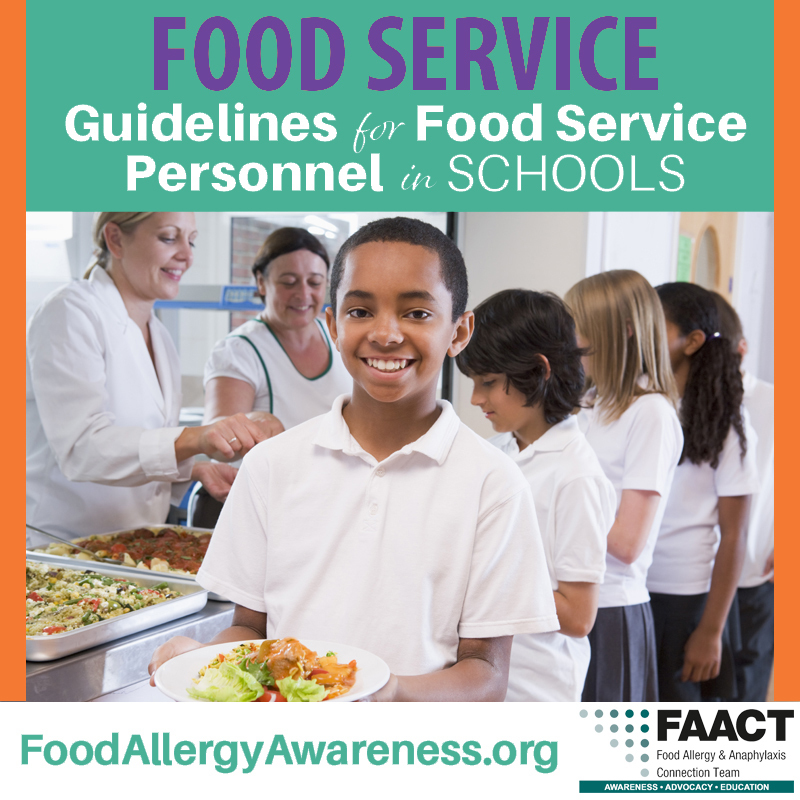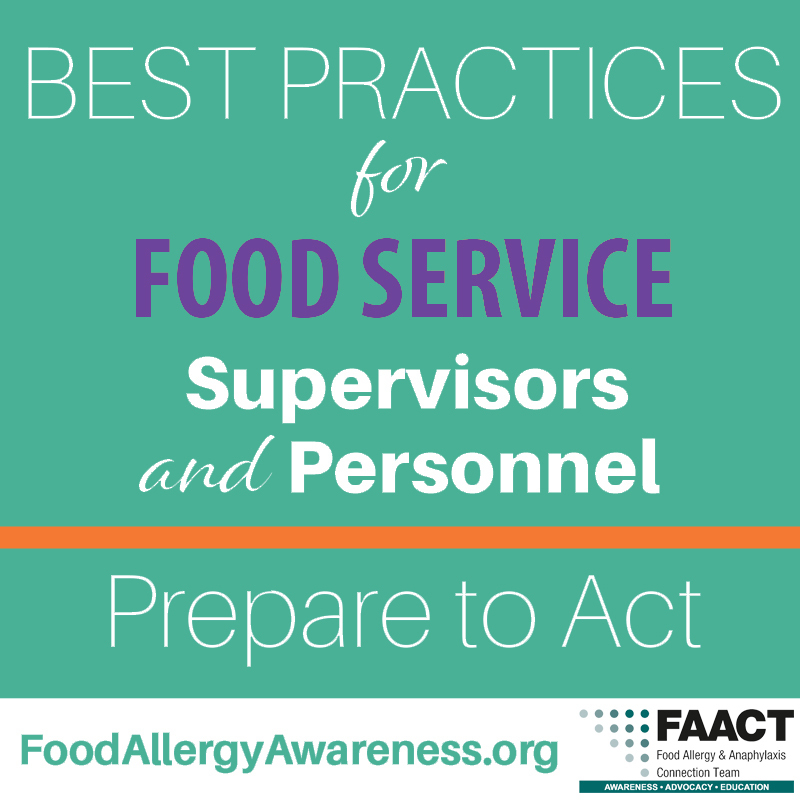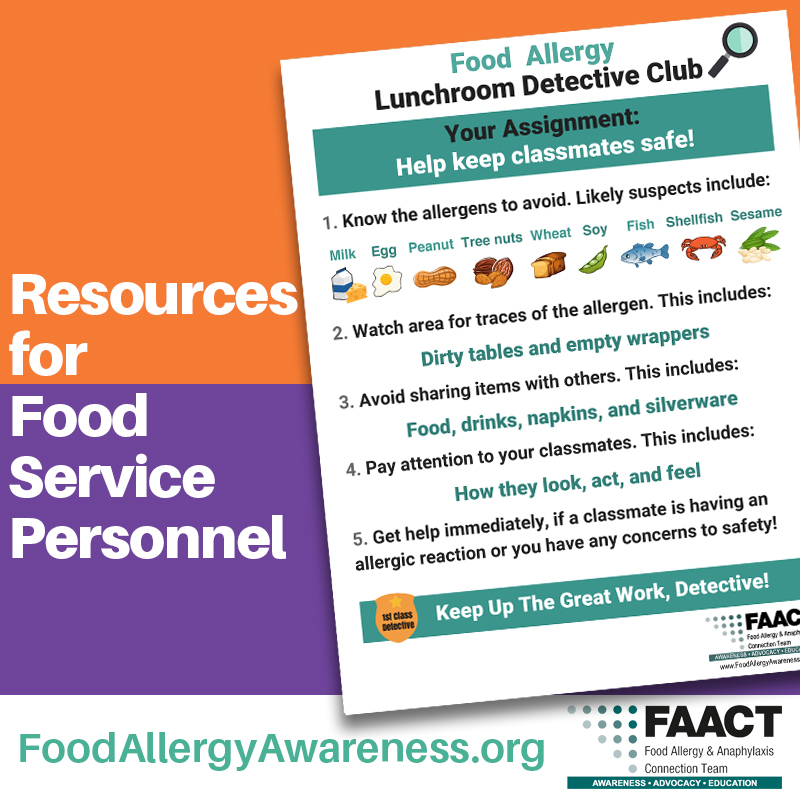Food Service
Subcategories

Guidelines for Food Service Personnel in Schools
With the increased number of students with food allergies now enrolled in schools – and 30 percent of food-allergic children allergic to multiple foods – increased education and resources for food service personnel are essential.
Mealtimes during school hours can be stressful for food-allergic students, their parents, school personnel, and food service personnel. The information provided here should be used to help create or strengthen food allergy management guidelines within food services in schools.
Accidents do happen, and all school personnel – including food service personnel – should be educated on emergency procedures should an allergic reaction occur. Food service personnel should attend all meetings prior to the beginning of the school year, and throughout the year as needed, regarding the needs of students with food allergies. This allows food service personnel the opportunity to learn about each student’s emergency action plan in addition to:
- Learning what foods each student must avoid.
- Learning best practices for the school year.
- Being able to ask questions about feeding the student.
- Being able to review the student’s Allergy and Anaphylaxis Emergency Plan (AAP).
- Receiving training on how to use prescribed auto-injector epinephrine devices.
- Learning about 504 accommodations or other plans in place for the students.
- Learning about student placement in the cafeteria and student safety and inclusion.
FAACT
There is no cure for food allergies. The only way to prevent a food allergy reaction from occurring is to avoid the offending food.
Download FAACT's Guidelines for Food Service Personnel in Schools: Best Practices & Prepare to Act

Prepare To Act
It is important that food service personnel prepare for and understand how to respond to a food allergic emergency. Steps to take include:
- Annual food allergy and anaphylaxis training for all food service personnel.
- Learn the signs and symptoms of an allergic reaction.
- Learn how to use the student’s epinephrine product and other medications.
- Advocate for emergency drills.
- Learn the procedure for activating EMS in an emergency.
- In the event of an emergency, follow the instructions provided by the physician on the student’s emergency action care plan.
- Additional concerns school staff need to prepare for in an emergency include:
- Who will give epinephrine? (Note the time the device was used – and write it on the device, if possible – for first responders).
- Who will call 9-1-1 and by what method?
- Who will retrieve the second epinephrine product and where will it be stored?
- Who will be outside the school to flag down first responders? (This is especially important in the private school setting or for schools located on large campuses.)
- Who will ride with the student to the hospital?
- Who will contact the parents?
- Where will the emergency numbers for the parents be located?
- Who will comfort remaining students and notify their parents (if needed)?

Resources for Food Service Personnel
- FAACT's Food Allergy Basics
- FAACT's Food Allergens
- FAACT's Food Labeling
- FAACT's Guidelines for Food Service Personnel in Schools: Best Practices & Prepare to Act
- FAACT's Cross-Contact (removing allergens)
- FAACT's School Lunchroom Poster
- Food Allergy Management & Education (FAME) School Nutrition Toolkit
- MenuTrinfo's AllerTrain K-12 Training Program
Additional FAACT Resources
For additional tools and resources, visit FAACT's Education Resource Center

